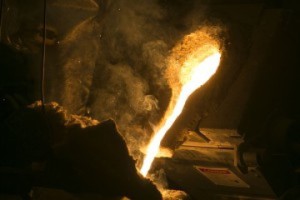
Missouri University of Science and Technology developed a high-strength steel which could help auto manufacturers in their quest to meet future fuel efficiency requirements. This new steel is known as a “third-generation advanced high-strength steel”.
“We are currently refining the steel design to achieve ‘Gen 3’ mechanical property goals while also maintaining manufacturability,” says center director Dr. Ronald J. O’Malley, the F. Kenneth Iverson Endowed Chair of Steelmaking Technologies at Missouri S&T. “This is one of the most promising generation-three steels I’ve seen.”
Under the U.S. Department of Transportation’s Corporate Average Fuel Economy (CAFE) regulations, auto manufacturers must improve the fuel efficiency of their vehicles year-by-year through 2020. Regulators have set a tentative goal of increasing fuel efficiency to 54.5 miles per gallon for cars and light trucks by the 2025 model year. Improvements in exhaust treatment systems, transmission efficiency and aerodynamics all contribute to better fuel efficiency. But reducing vehicle weight is also important in achieving the CAFE goals, O’Malley says.
“Automakers must make lightweight vehicles without sacrificing safety,” O’Malley says.
The S&T researchers are employing a method known as TRIP (transformation-induced plasticity) to obtain the performance required to meet both safety and CAFE goals. It involves the transformation of an unstable crystal structure known as austenite, which normally exists at high temperatures, into martensite, a harder substance that develops as the steel deforms.
The real challenge, however, lies with the large-scale production of these new steels. With the help of industrial partners, the researchers at Peaslee Steel Manufacturing Research Center are examining all aspects of the steel manufacturing. A committee of representatives from four steel manufacturers – Nucor, U.S. Steel, AK Steel and ArcelorMittal – oversees the project.
One benefit of conducting the research at Missouri S&T is the ability of researchers to create and test small batches of steel. In S&T’s labs, researchers can create 200 pounds of steel at a time, whereas big steel manufacturers like Nucor, where O’Malley was chief metallurgist before joining S&T, would have to make 170 tons of steel for testing, O’Malley says.
Credit: Image courtesy of Missouri University of Science and Technology



